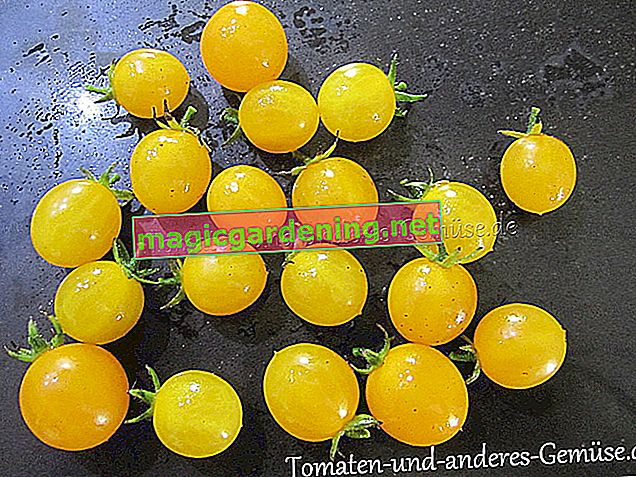
The choice of location sets the course for success
Tomatoes are one of the few crops that do not have to change location every year. As long as they thrive healthily, they can stay at the regular place for years. Only the proximity to potatoes or other nightshade plants is to be avoided. We'll tell you what other properties an optimal location should have here:
- sunny location, warm and as protected from rain as possible
- nutrient-rich soil, humic, fresh and well-drained
- a good pH fluctuates around 6
also read
- Place tomatoes correctly - this is how it works in beds and pots
- Transplant tomatoes with a sure instinct - this is how it works
- Do tomatoes also thrive in partial shade?
Cultivation and hardening create small powerhouses
In the field, only the strongest tomato plants can cope with the local weather conditions. Therefore, it is important to strengthen the resistance when cultivating in the house. Soak the seeds in chamomile tea, garlic juice, or valerian flower extract before sowing. Only prick out robust seedlings. We also recommend a hardening phase before the young tomatoes are finally moved to the field.
- from a constant outside temperature of 12-15 degrees Celsius carry the young plants outdoors
- Set up by the hour in the partially shaded, sheltered place during the day
- after 8-10 days the tomatoes can tolerate full sun
Planting and caring for tomatoes in the field - the key points
When the planting season begins in mid-May, place the tomato plants in the bed at a distance of 60 centimeters. Pamper the heavy eaters with a handful of compost, straight into the planting hole. Then place the tomatoes in the soil at a slight angle up to the base of the leaves. Then hit the support rod in the ground and tie the first shoots.
Regularly water tomato plants directly at the root area. Until flowering, the nutrient supply is limited to compost. From June / July, increase the dosage to a 14-day cycle with nettle manure or mineral multi-nutrient fertilizer. Most tomato varieties thrive more abundantly and productively if they are maxed out weekly. Those who take this focal point of care to heart will be rewarded with gorgeous tomatoes in abundance.
Tips & Tricks
If building a rain roof for tomato plants is too laborious for you, you should preferably plant grafted varieties outdoors. 'Philona F1' is one of them, as well as 'Cupido' or the new breed 'Conqueror F 1'.








